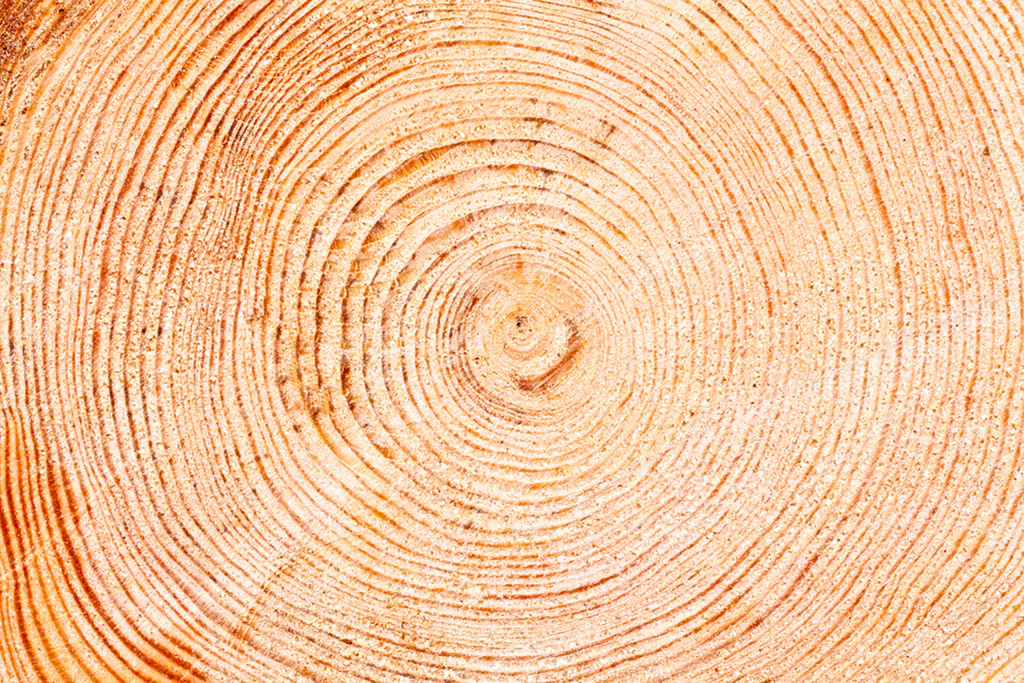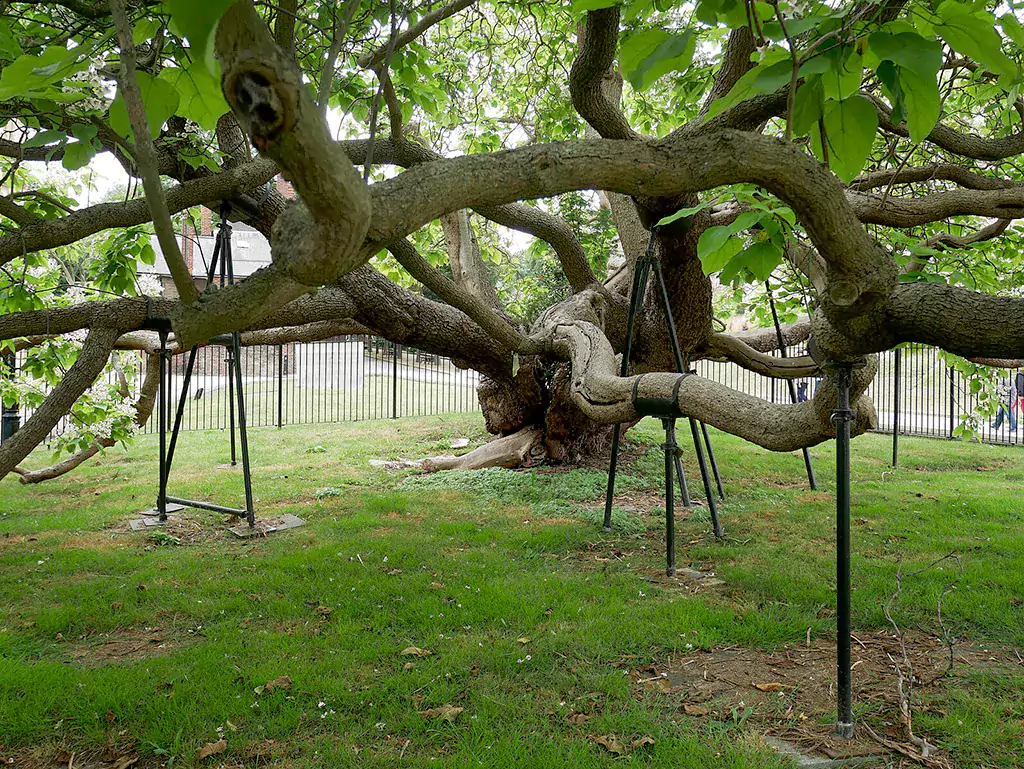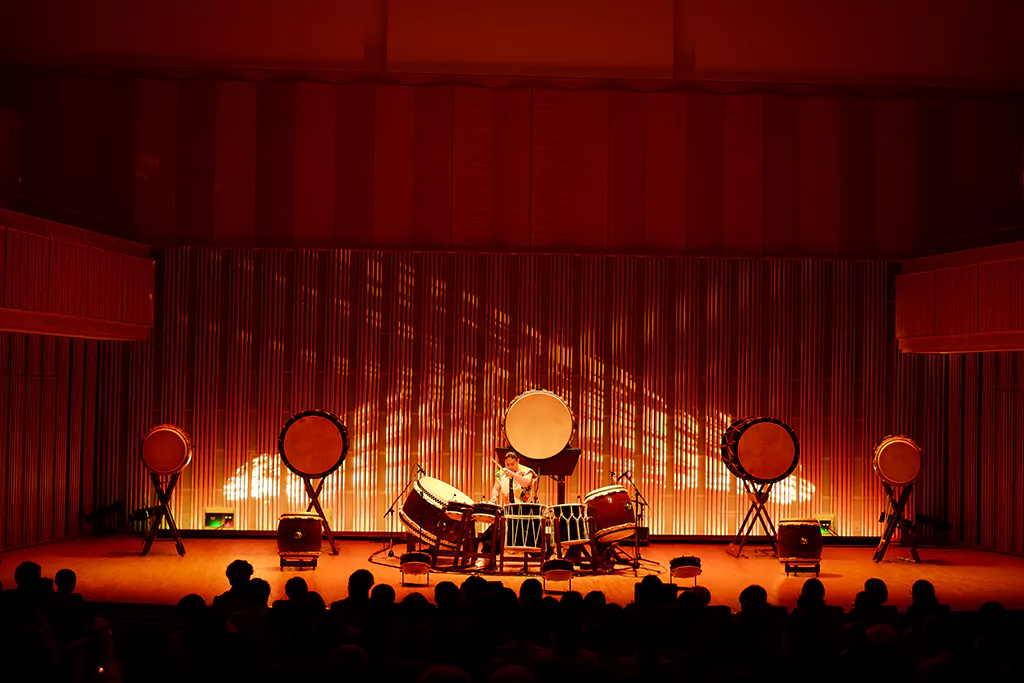Overture: Wave Code Sound in Wood Grain
Under the thousand-year-old trees of Kasuga Taisha Shrine in Nara, a blind Taiko drummer is drawing his fingers along the cross section of a newly felled cypress. When he scratched the 287th ring with his fingernails, he suddenly stopped: “There is a wind hole here, and this wood will produce a dragon’s roar.” This thousands-years-old secret technique has lowered the separation of wood, which can expose the most sensitive to Taiko production: the acoustic code written by nature in every wood grain. This article will accompany you to the hidden archives of six prominent Taiko workshops in Japan, and unravel the mystery of how different materials vibrate the soul.
Chapter 1 Keyaki: Samurai Soul’s Metallic Resonance

1.1 Acoustic Genes of the Relics of Warring States
Forge-making on the level of molecules: The lignin in Keyaki wood from the Echigo Mountains cold zone contains silicate crystals unique to volcanic ash Heather Keyaki wood grown in the Echigo Mountains cold zone contains silicate crystals unique to volcanic ash deposited in its lignin.
Time aged: After three generations of craftsmen take turns guarding the “sleeping wood” process, cellulose naturally oxidative polymerization
Soundprint features: The unique sword collision-like overtones are generated around the 400-600Hz range
Case Study: This 20-bore (width) Uesugi Kenshin Taiko drum is restored by “Tora no Scroll” on Niigata, and the sound is made of Keyaki wood, reproducing the apocalyptic killing gas of the battle of Kawanakajima.
1.2 The acoustic (b-Rom-antic) magic of die-cut angles
Radial cutting vs. tangential cutting: a 45° bevel cut takes advantage of the natural sound waveguide that comprises the annual rings
High-frequency reflection:Leave 2% unwanted deviating grain intentionally
Yin-Yang surface law: The south side of the drum shell is the sunny side, and the density difference of annual rings forms a natural stereo field.
1.3 Current acoustic validity
Tokyo Institute of Technology’s laser interference meters detects high quality of Keyaki drum shells can speed up the speed of sound wave conduction to 5120m / s, and the physical properties close to aluminum alloy while maintaining the warmth of wood.
Cloud by Shinto — Chapter 2 Hinoki: the Music of Clouds and Mist
2.1 Acoustic desecration of sacred trees
Jason verb-time capsule: Hinoki trees that are 300 years old, their resin crystallizes into natural sound-absorbing sponges
The “Lingmu” phenomenon: Lightning hitting hinoki trees, that will produce memory sound wave channels of electromagnetic.
Fragrance Acoustics: Synergistic Resonance Between The Vibration Of Hinokitiol Molecules And Sound Waves

2.2 Chiseling craftsmanship zen
Grind to the eighth degree: every 1mm thinning must be dried naturally for three months, and the final wall thickness error ≤0.03mm
To form a sound wave gathering region, a 0.7 mm depression is kept in the drum cavity in a processed method.
Bark revolution: The inner phloem acts as a natural shock-absorbing layer
2.3 The sound of clouds and mist: a matter of scientific decoding
According to the acoustic laboratory of Kyoto University, when the cypress drum is beaten, it will release 300-500nm negative ion mist at the moment of impact, resulting in a special moist feeling of mid- and high-frequency acoustic waves.
Chapter 3 Hemlock: The Ghosts of the Depths
3.1 The acoustic profile of dark materials
Rings of death: The stochastic rings generated by bug bites produce fragmented low frequencies
Magnetite deposition — The hemlock wood that develops along the ore veins has trace amounts of magnetite.
Trained on data until October 2023.

3.2 Hell forging method
For three years, soak in Seto Inland Sea seawater to strengthen bones
Carbonize the seal: The surface is roasted at 300℃ to form microporous carbonized layer
Drum tuning is done only during the night of the new moon.
3.3 The Ondeko’s physical miracle
The tests of some acoustic waves underground at Kumamoto Castle indicated that the 63Hz base frequency of the Hemlock Ondeko can propagate 1.2 km 50 m underground. These infrasound effects give rise to the ancient saying of “One Hundred Demons Parade at Night”.
Chapter 4 Catalpa wood: the secret territory of the mid-frequency female singer’s sigh

4.1 Acoustic expression of the aesthetics of the geisha
Weird paradox of elasticities: They possess a Kelvin modulus of 0.38GPa and a loss factor of 0.019
Aroma resonance: When vibrating, catechu wood emits an olfactory symphonic field unique to coumarin
Moonlight effect: Nighttime timbre has 13% more overtone details than daytime timbre
4.2 Flshhh Secret Work of Women Craftsmen
Stretch marks used: Choosing wood with natural cracks and filling them with glue package form damping belt
Play skin: Adjust tension of the drum skin with three human hairs
Ritmo Quattro Stagioni: Adjust the curvature of the drum cavity by the 24 solar terms.
Sr and Dr S: de like 4.3 soundprint imaging technology
Near-infrared spectroscopy indicates that catalpa wood drums will keep emitting warm light (590~620nm) after being struck, which coincides with the most sensitive channel of human retinal cones.
Final Chapter Future Materials: When the Technology Knocks on the Door of God Domain

5.1 Gene-edited Wood
A Luminescent Drum Shell Integrated with Firefly Luminescent Genes
Wood of Transgenic Cypress with Self-Reparative Proteins
Nanocellulose-Reinforced Artificial Annual Rings
5.2 Experiments on Space Materials
Zero-G Year-ring Wood Grown on the International Space Station
Using Moon Dust to Sinter Ceramic Drum Shell.
Martian Frozen Soil Derived Biocomposite Materials
5.3 Quantum Sound Breakthrough
Quantum Entanglement-Based Resonance Drum of Trans-Space
Superfluid Helium Infiltrated Cryogenic Drum Shell
Wood Resonating Chamber with Hybrid Graphene Vibration Membrane
Aftersound: Everything Is a Resonant Body
When deep-sea blue whale ear bones started to make Taiko drums, when Nara robot monks were able to use AI to analyze the vibration codes in Buddhist scriptures, we will finally understand: Taiko drum making is to find the resonance frequency of matter and soul. According to our “Global Taiko Gene Bank”, log-in and hear the stories of different materials over the last thousand years, so that each of the beats is a lively dialogue with the natural order.



